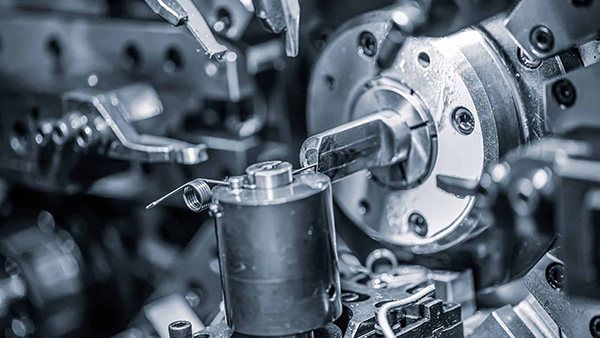You might find it surprising to learn multi-axes featuring four to 12 axes were already in use before the advent of CNC milling techniques. These machines featured operation with levers on a cam plate and were used for optimal clamping, table control, tool, and rotary motion.
While cumbersome and large, these multi-axe devices were capable of mass production and the precursor to the invention of the modern 5-axis CNC milling machine found in workshops around the globe today.
Early Beginnings
In the 1940s, Frank Stulen and John T. Parsons invented the “numerically controlled” (NC) machines, which ran on punched tape.
The Parsons Corp. formulated the idea while manufacturing helicopter parts requiring complex design structures. Student invention saw him awarded the “National Medal of Technology and Innovation” in 1985.
Further Developments
As we entered the computer era in the 1960s and 70s, NC machine manufacturers implemented the use of computerized controls.
The NC machine eventually evolved into the first version of the CNC machine, and the introduction of programming language revolutionized the automated use of these machines, with most CNC machines operating on “G-code” today.
The Introduction of Post-Processing Systems
The introduction of post-processing systems was a real game-changer for the industry. CAD programs created designs that CAM programs mapped into machine movement and tool paths.
This post-processing converted CAM results into code read by the machine while in use. This advancement permitted machines to read CAM designs, adding ease of use and versatility to manufacturing operations.

5 axis machining
Rapid Adoption in the Computer Age
When computer components and technology became more affordable in the 1970s, manufacturing companies started to adopt the technology as it became more affordable.
Advancing CAM systems also allowed less experienced operators to run the machine and made it possible for non-experts to use them. The lack of manual repositioning of machined objects led to better efficiency in labor, allowing for cost-effective CNC manufacturing.
Process automation and quality improvements led to companies’ rapid adoption of CNC technology. Multi-axis CNC milling machines remained pricey due to their operation and design complexity. These machines were primarily found in the aerospace industry since these companies had the manufacturing budgets to support their purchase and use.
Today, it’s common to find multi-axis CNC milling machines on shop floors in various industries due to the improvements in cost reduction. Some of the first 5-axis CNC machines were on the U.S. Department of Defense commerce control list until as late as 2009.
The advanced technology in the 5-axis milling machine made the DOD consider them as advanced technology and a national security concern, limiting and regulating their export to other countries.
Advancements in Technology, Software, & Training
As technology advanced in the 1990s and 2000s, 5-axis CNC machines became more user-friendly and affordable, leading to industry-wide adoption of the technology in production processes. With the widespread use of 5-axis CNC milling, colleges started creating courses instructing candidates on the effective and proper use of the machines.
Education on 5-axis CNC milling techniques gave students the skills they needed to use these machines effectively and efficiently. Without correct and thorough training, companies risk damage to the device and the inability to use it to its full capacity in production processes.
There’s no point in purchasing a 5-axis CNC machine if operators don’t know how to use the device to its full potential. Correct training and instruction ensure client satisfaction, higher cost savings, labor reduction, automation procedures, and quality improvement.
The Future of 5-Axis CNC Machining
5-axis machining isn’t going anywhere anytime soon. The technology continues to experience rapid adoption, with many manufacturing companies using these machines in specialized production applications.
